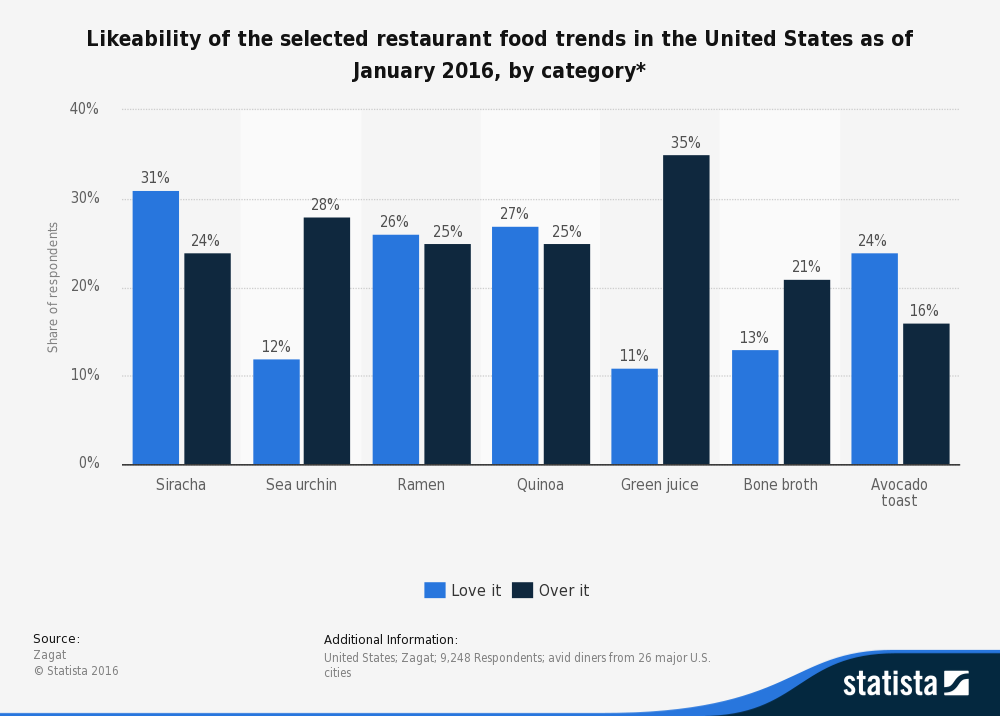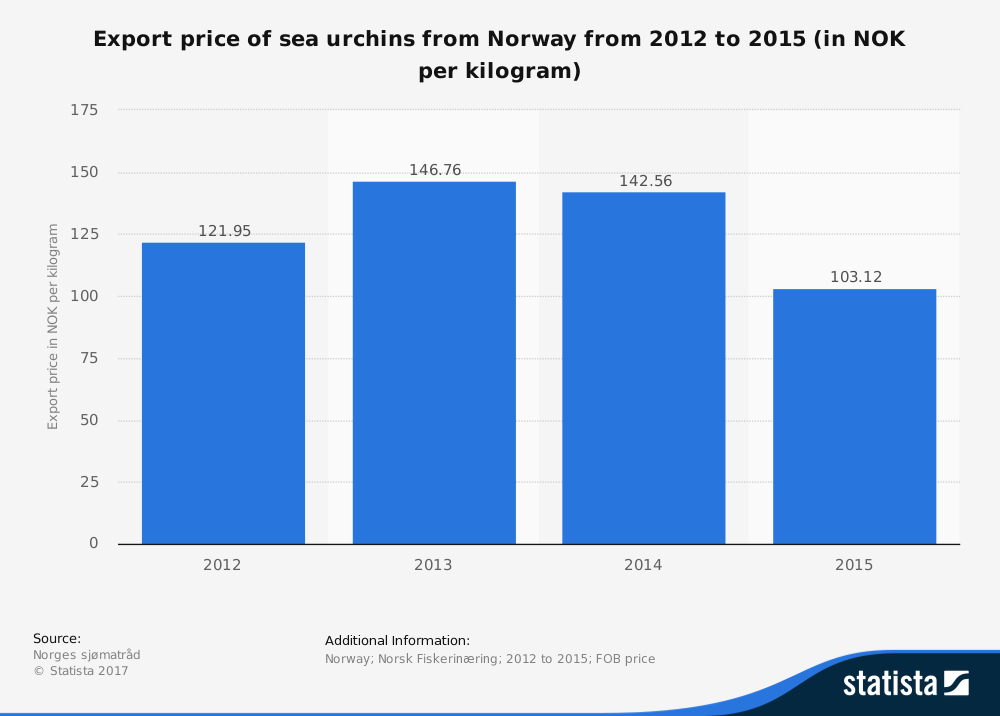Sea urchins, sometimes called “sea hedgehogs,” are one of the most over-harvested creatures in our oceans. There are about 950 different species that inhabit all oceans at varying depths. Their hard shells, called “tests,” are spiny and round and come in a variety of colors. Some sea urchins can achieve a diameter of 4 inches.
They have been over-harvested because they are considered a culinary delicacy in much of the world. In Japan and the United States, they have even earned the nickname of being the “foie gras of the sea.”
To save the sea urchin from possible extinction, farming efforts are being developed in the aquaculture industry. The industry itself is new and still attempting to find a market for sustainability. Five recent efforts to establish sea urchin farming in Maine, for example, have all recently ended in failure.
Farming sea urchins is difficult because the animals need a certain amount of space and certain foods to stay healthy. That makes it difficult to farm sea urchins in a volume that is necessary for profitability.
Important Sea Urchin Farming Statistics
#1. The global sea urchin market was valued by the FAO at $200 million in 2007. (Seafood Source)
#2. Japan imports about 97% of the global sea urchin market. (Seafood Source)

#3. In 1995, the global market consumed over 115,000 metric tons of sea urchin. In 2007, that figure fell to 78,000 metric tons. Some markets, such as Ireland, fell dramatically. Irish imports in 1995 were about 1,000 metric tons. In 2007, it was less than 3 metric tons. (Seafood Source)
#4. Chile is the largest producer of sea urchins in the world, accounting for 45% of the global market in total volume measurements. (Seafood Source)
#5. About 9,000 tons of sea urchin are consumed in Japan every year. Uni is a popular dish, made up of the inner roe of the sea urchin, and often served in sushi restaurants. (University of Maine)
#6. In 1992, 100% of fished sea urchins in the United States were exported to Japan. Now 80% of fished sea urchins are shipped domestically in the U.S. (CNN)
#7. Prices for sea urchins in 1992 were about $0.25 per urchin. The price has recently gone as high as $7.60 per pound. (CNN)
#8. With pricing changes, there were 1,700 fishing licenses for sea urchins issued in 1994. Another 1,000 dragger licenses were issued in Maine. That divided harvest zones and limited the active seasons. (CNN)
#9. Most farming projects that involve sea urchins are able to produce fewer than 350 tons of product that can be introduced to the general market. Most farms take at least 12 months to begin being able to offer viable sea urchins for shipment. (Matis)
#10. Chilean sea urchins and Strongylocentrotus spp. are the most common species harvested, accounting for up to 68% of landings in their region. (Matis)

#11. Sea urchins that are reared through aquaculture, from eggs to market, or through roe enhancement, account for less than 0.01% of the global market. (Matis)
#12. For fresh, frozen, or chilled sea urchin roe, Chile provided 51.7% of the global market for the industry. The United States supplied 21.5% of the market, while Canada supplied 8% of the market. (Matis)
#13. Almost 90% of the live sea urchins that are shipped to the global market come from Russia. The next largest supplier is North Korea, providing 6.1% of the market. The United States is third in this category, with a 3.6% market share. (Matis)
#14. Frozen sea urchin roe is often the best option for imported products in Japan. About 600 metric tons of frozen imports from Chile reach Japan each year. (Matis)
#15. Most species of sea urchin have the ability to live for up to 30 years. The Red sea urchin has the longest known lifespan on our planet, surviving for up to 200 years in its habitat. (Soft Schools)
#16. Commercial catches in Spain have been relatively consistent since 2010, averaging between 500 to 750 tons each year. (Urchin Project)
#17. The French market for sea urchins is estimated to be about 450 tons of whole urchins per year. (Urchin Project)
#18. In 2014, the harvest of sea urchins in Maine was about 900 metric tons. That provided a market value of about $5.4 million. (Urchin Project)
#19. California was able to harvest about 5.3 million tons in 2013, with an estimated value of $9.8 million. The difference between the west coast and east coast urchins in the U.S. is size. California has access to red urchins, while Maine has access to green urchins. (Urchin Project)
#20. About 70% of the total sea urchin harvest that occurs in Canada comes from the west coast, with British Columbia featuring red sea urchins. (Urchin Project)
#21. 70% of the Canadian harvest of sea urchins is actually green urchins, with 460 metric tons of them being supplied to Japan each year through exports. Canada is also the primary supplier of live sea urchins to the U.S., though this is due to the fact that few processing facilities exist in Canada. (Urchin Project)
#22. In one region of Russia, the Kuriles, an estimated 10,000 tons of sea urchin are harvested each year. Up to 80% of the annual catch is believed to be obtained illegally and may not be accurately reported. (Urchin Project)
#23. High roe content for European urchins is relatively low, with 37% of the potential fishery providing products suitable for market. In the Breidafjordur area, more than 60% of the fishery is either too small or contains roe content levels that are not viable for the market. (Urchin Project)
#24. Just 1 species of sea urchin is found in commercial quantities and size in Norway. The domestic market is quite limited, which means the estimated reserve of 56,000 tons is primary exported to Japan and the United States. (Urchin Project)
#25. Norway’s annual sea urchin harvest is often less than 10 tons and is primarily achieved by one long-term fishing organization. (Urchin Project)
#26. The output of juvenile sea urchin production for one species, P. lividus, has been in excess of 1.5 million saleable seed sea urchins. Just one company, Dunmanus Seafoods, drives this aquaculture effort. (Urchin Project)
#27. There are more than 100 different species of sea urchin found in Japan, but only 6 of them are actually harvest for human consumption. (Urchin Project)
#28. Until the 1980s, Japan was the leading global harvester of sea urchins. With declining wild stocks and no viable aquaculture environment, landings have decreased to less than 8,000 tons in recent years. (Urchin Project)
#29. The total volume of exports to Japan for sea urchin products from all suppliers is an estimated potential value of $300 million, according to 2015 figures. (Urchin Project)
#30. Live sea urchins are the most popular product for the industry in Japan. About 20,000 metric tons of live urchins were reported in 2013, with a value of about $175 million. Up to 70% of imports to Japan in any given year involve live urchins, which are then processed by domestic companies. (Urchin Project)
#31. Frozen roe sells for as little as 25% of the value of fresh roe because of drip loss and a change in product texture. (Urchin Project)
#32. Jobs growth in the aquaculture sector could grow in some areas by more than 23%. One organization in Australia believed it has closed the farming cycle to make sea urchin aquaculture viable. They anticipate the price of farmed urchins could rise by up to 10% per year. (ABC News – Coff Coast)
#33. The Japanese sushi market today, on its own, is equal to the value of the global sea urchin industry in 2007. (ABC News – Coff Coast)
Sea Urchin Farming Trends & Analysis
The Tsukiji Market in Japan may have the answer to the profitability issue for sea urchin farming. At the market, there are 5 sea urchin wholesalers represented and items are sold at auction. Instead of a bidding war, all 5 wholesalers are required to offer their best price simultaneously, with the largest amount taking the product.
At the same time, middlemen are allowed to inspect the available sea urchins from wholesalers. They also bid on products in a similar style of auction.
As of right now, the sea urchin farming industry is primarily located in Japan, China, and the Korean Peninsula. Most farming efforts are intended to cultivate the wild stocks that were commercially fished. Experimental farming efforts occur on land and involve feeding sea urchins different foods while stacking containers to maximize the use of space.
In time, with enough innovation, the sea urchin farming industry has the potential to thrive. There are about 50,000 metric tons estimated to be missing from the global market in terms of demand. That means there is a profit potential to be found for those who can innovate a successful method of aquaculture.
Although millions of people visit Brandon's blog each month, his path to success was not easy. Go here to read his incredible story, "From Disabled and $500k in Debt to a Pro Blogger with 5 Million Monthly Visitors." If you want to send Brandon a quick message, then visit his contact page here. Brandon is currently the CEO of Aided.
